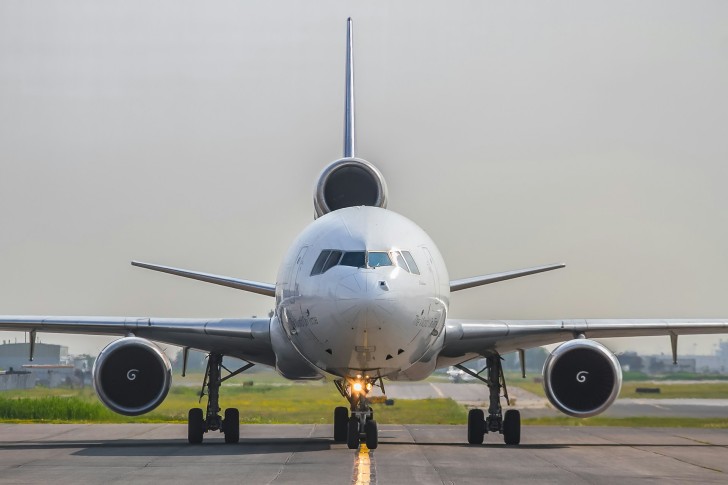- The Role of Air Freight in UK–Canada Trade
- What Types of Goods Travel by Air?
- Why Heathrow Is the UK’s Air Freight Hub
- How Consolidated Air Freight Works
- Customs and Documentation for UK–Canada Air Freight
- Balancing Speed and Cost in International Freight
- Keeping Trade Moving Between the UK and Canada
- Air Freight’s Ongoing Role in UK–Canada Trade
The Role of Air Freight in UK–Canada Trade
The UK exports a wide variety of goods to Canada, from machinery parts and electronics to specialist equipment. In return, Canadian companies send parts and products to support British industries. While sea freight handles large and less urgent consignments, air freight is the go-to choice when speed is essential.
Sending goods by air can reduce delivery times from weeks to just a few days. This speed helps UK firms respond quickly to customer orders, keep production lines running, and avoid the risks that come with long delays.
What Types of Goods Travel by Air?
Air freight is ideal for certain types of commercial shipments. Common examples include aerospace and automotive components, electrical goods, specialist tools, and medical devices. These items are often vital to ongoing operations or time-limited projects, meaning delays are simply not an option.
Some shipments are small in size but carry high financial or operational value. For instance, a single electrical control unit for a factory may be worth thousands of pounds and be needed immediately to prevent a halt in production. In such cases, the speed and reliability of air freight outweigh the extra cost.
Why Heathrow Is the UK’s Air Freight Hub
Heathrow is the busiest airport in the UK and one of the most important cargo hubs in Europe. For air freight to Canada, it is a key departure point with regular services to Toronto, Vancouver, Montreal and other major Canadian cities.
Its position makes it ideal for consolidated air freight. This is where shipments from different customers are grouped together in the cargo hold of a commercial or cargo aircraft. Heathrow’s advanced freight handling facilities and strong airline connections mean goods can be received from across the UK by road, processed efficiently, and flown out on the same day.
Although other UK airports like Manchester, Birmingham and East Midlands also handle international air freight, Heathrow’s frequency and range of destinations make it the most practical choice for most businesses.
How Consolidated Air Freight Works
UK businesses sending goods to Canada usually do not use dedicated cargo planes. Instead, shipments are placed on commercial or cargo flights as part of a consolidated service. This allows several companies to share the cost of a single aircraft’s cargo hold.
Consolidation has several benefits:
- Lower costs per shipment
- Flexible scheduling with frequent departures
- Suitable for small to medium volumes
- Secure handling and tracking
Because you are only paying for the space your shipment takes up, consolidated freight offers better value than hiring a full plane. It also allows for more regular shipments, which is especially useful for businesses that need to send smaller loads frequently.
Customs and Documentation for UK–Canada Air Freight
When shipping goods internationally, customs clearance must be handled correctly. The UK and Canada have a well-established trading relationship, but you still need to complete the proper documentation.
This includes:
- A commercial invoice with a clear breakdown of goods
- Correct commodity codes (HS codes)
- Export declarations for UK customs
- Import procedures required by Canadian authorities
Mistakes in the paperwork can cause delays, fines or even rejected shipments. That is why many companies choose to work with freight forwarders who manage both the logistics and the customs process. For official guidance on exporting goods from the UK, you can refer to the UK Government website.
Balancing Speed and Cost in International Freight
Air freight is faster than sea freight, but it is also more expensive. The key is knowing when it is worth paying more for faster delivery. For example, if a part is needed to repair critical machinery or if stock needs to reach a customer by a set date, the cost of delay may far exceed the price of air freight.
On the other hand, for bulk orders or non-urgent items, sea freight may still be the better choice. Many companies use a mix of air and sea depending on their timelines, budgets and the nature of the goods.
Understanding when to use air freight helps businesses plan better and avoid the risks that come with missing deadlines or halting production.
Keeping Trade Moving Between the UK and Canada
Trade between the UK and Canada continues to grow. Air freight helps keep this relationship working by providing a fast and dependable method of shipping.
Thanks to regular consolidated flights, businesses can move goods quickly without needing to fill a container or book a full aircraft. With Heathrow acting as a major hub, and commercial flight schedules offering strong availability, it is easier than ever to send cargo directly from the UK to Canadian cities.
If your business is looking into reliable options for air cargo to Canada from the UK, you will find that consolidated air freight is a practical and flexible solution for regular shipments.
Air Freight’s Ongoing Role in UK–Canada Trade
Air freight allows UK businesses to maintain strong supply chains, meet tight deadlines, and keep goods flowing between Britain and Canada. While it is not suitable for every type of shipment, it is often the best option when time is short and reliability is a priority. As international trade continues to evolve, air freight remains an essential service for UK firms working across borders.
 Editorial staff
Editorial staff

 Editorial staff
Editorial staff


